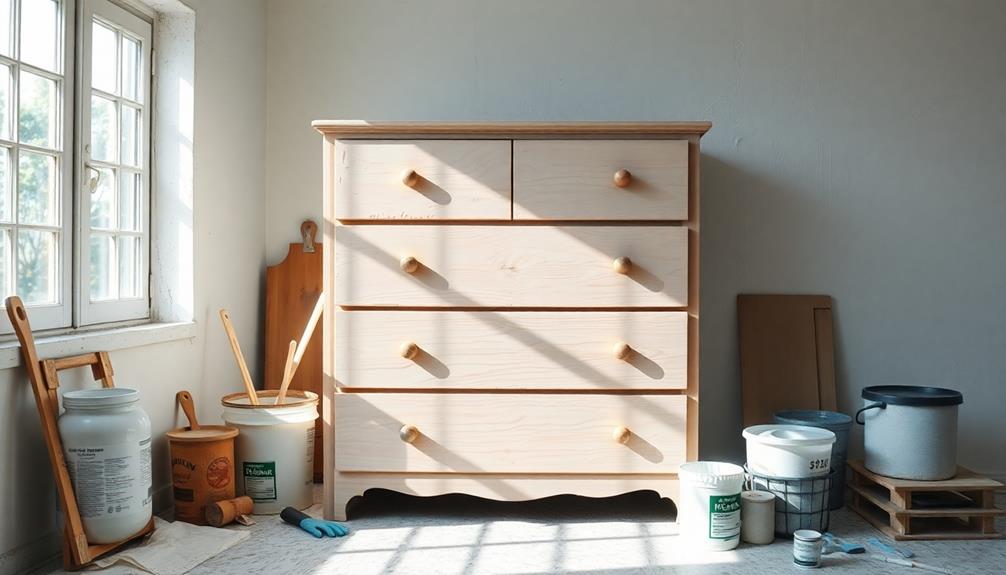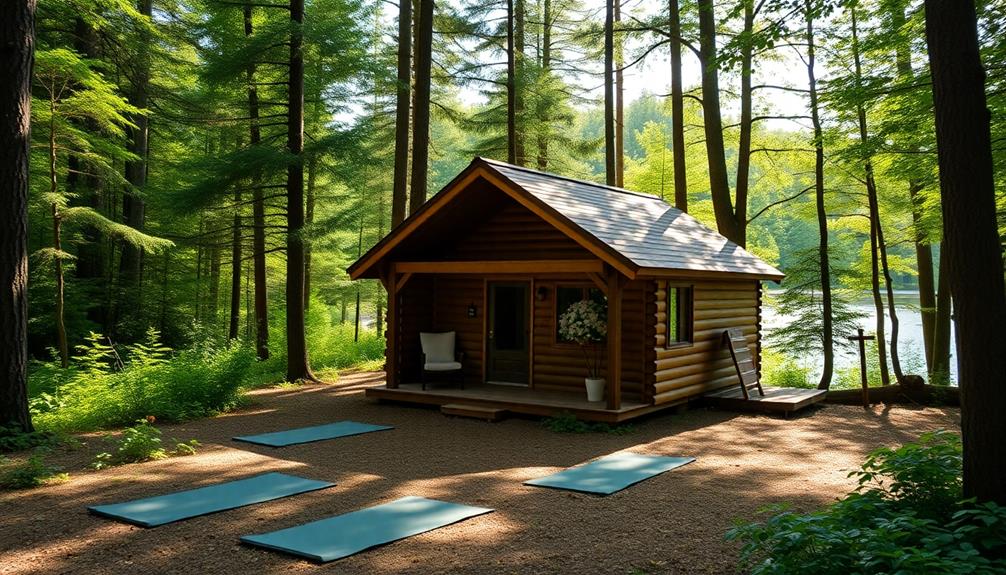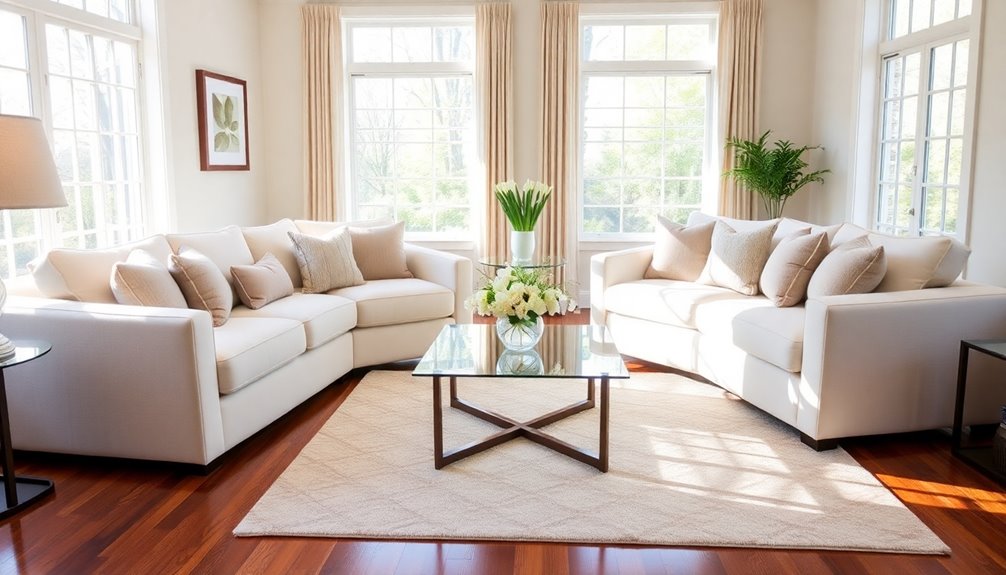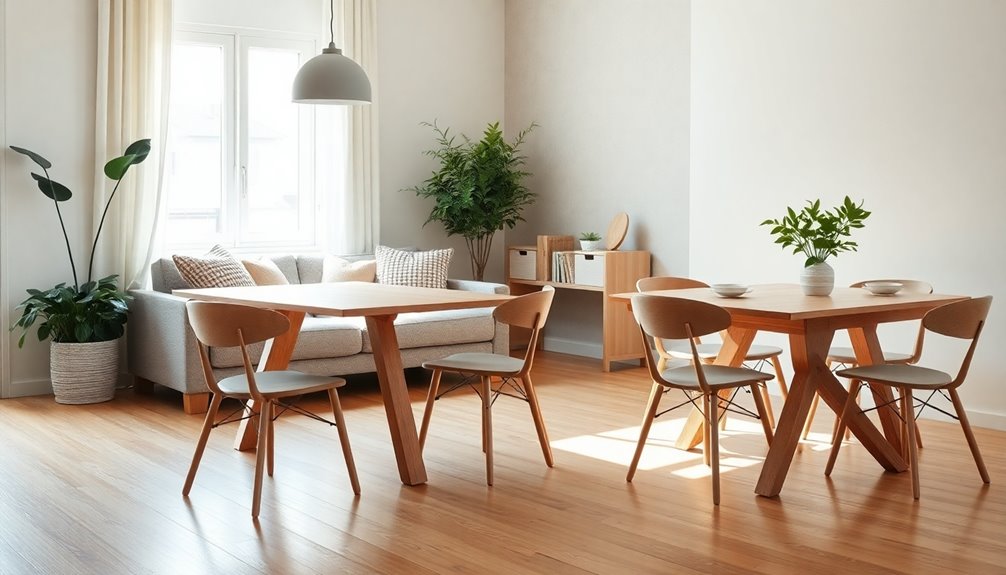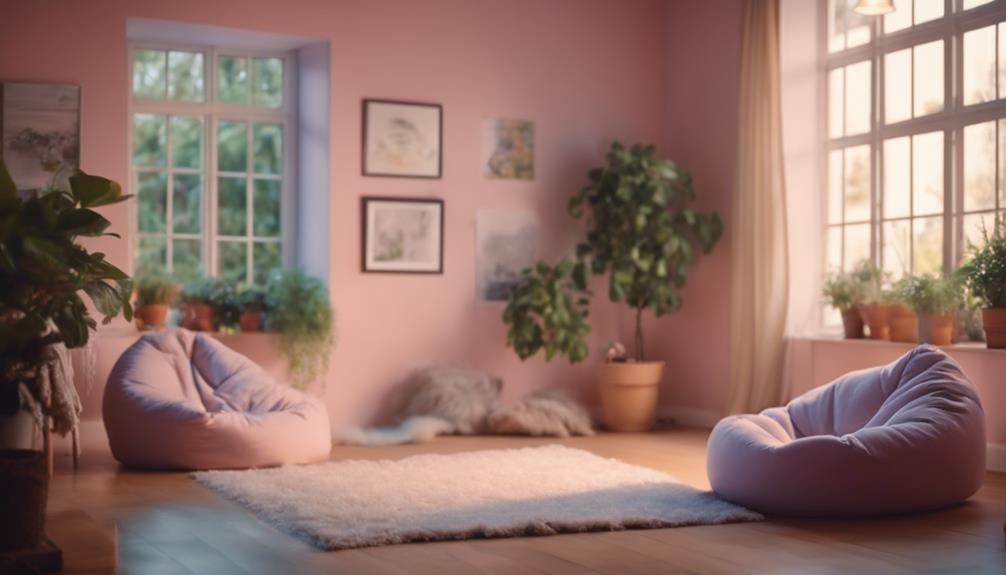Bleaching furniture is an easy process that can breathe new life into its appearance. Initially, ensure that your furniture is made of solid wood and clean it using a degreasing solution. Combine equal parts of household bleach and hot water, then apply it evenly with a brush in a well-ventilated area. Allow it to sit for 15 minutes before thoroughly rinsing. If needed, repeat the process, especially on darker woods. After bleaching, lightly sand the surface to create a smooth finish and let it dry completely. Finish by applying a non-yellowing sealer for protection. Stay tuned for more helpful tips for success! Once sealed, your furniture will have a lighter, rejuvenated appearance. For those interested in adding color or character, experimenting with dye techniques for wood furniture can yield stunning results. Whether you prefer a subtle tint or a bold transformation, dyeing can enhance the natural grain, providing a unique, personalized touch.
Key Takeaways
- Confirm the furniture is solid wood and clean it with a wood-safe cleaner before bleaching.
- Mix household bleach with hot water in a 1:1 ratio and apply evenly in sections.
- Allow bleach to sit for 15 minutes in sunlight, then rinse thoroughly with water.
- Sand the bleached wood lightly with fine-grit sandpaper and let it dry completely.
- Apply 2-3 coats of non-yellowing sealer to protect and enhance the wood's appearance.
Methods of Bleaching Wood
When it comes to bleaching wood, there are several effective methods you can choose from based on your project's needs. One popular option is using household bleach, which typically contains 5.25% to 6% sodium hypochlorite. This method works well for lightening wood and can effectively remove stains, especially on lighter woods with cool undertones.
For those looking for a natural approach, consider incorporating essential oils for health benefits alongside your wood projects. If you want to restore the natural appearance without altering the wood color, oxalic acid is a strong acid that can help, but remember to take safety precautions during handling.
For significant color changes, consider a two-part A/B wood bleach made from sodium hydroxide and hydrogen peroxide. This method requires waiting 5-10 minutes between applications for the best results. The bleaching process might require multiple applications, and remember that sunlight can enhance the effects.
Always apply the bleach evenly to prevent pooling and watermarks. After bleaching, it's essential to neutralize the bleach with a 50:50 vinegar and water solution to avoid unwanted reactions that could damage the wood.
Preparing Furniture for Bleaching
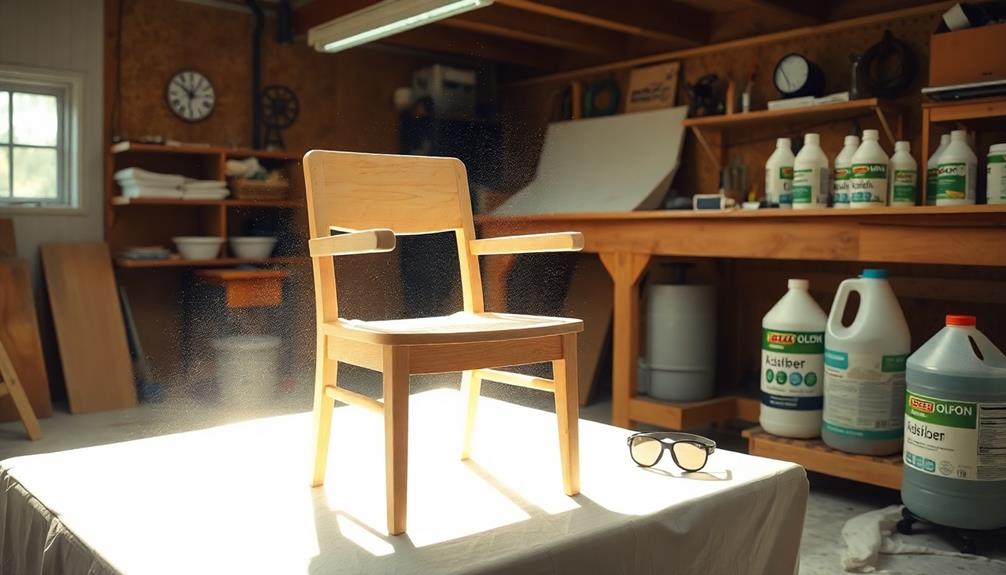
Properly preparing your furniture is vital for achieving the best bleaching results. First, confirm your piece is made of solid wood, as this will yield the most effective outcome during the bleaching process. Additionally, using a cleaner that's safe for wood surfaces is essential, as it will help in removing any stubborn residues that might affect the bleach's performance.
Start by removing all hardware, like knobs and hinges, to protect them from bleach and confirm a thorough treatment of the wood surface.
Next, clean the furniture thoroughly using a degreasing solution, such as Tri-Sodium Phosphate. This step eliminates dirt, oils, and residues that could impact the bleaching results, and if you're interested, you can learn about effective natural ingredients for cleaning that can be used prior to bleaching.
Once the furniture is clean, it's important to test the bleach on a small, inconspicuous area to see how the specific wood type reacts. This way, you can anticipate the final look before applying bleach to the entire surface.
Lastly, protect your surrounding surfaces and confirm your workspace is well-ventilated to minimize exposure to bleach fumes and prevent accidental spills. Taking these precautions won't only enhance the effectiveness of the bleaching process but also keep you safe while working.
Application Techniques
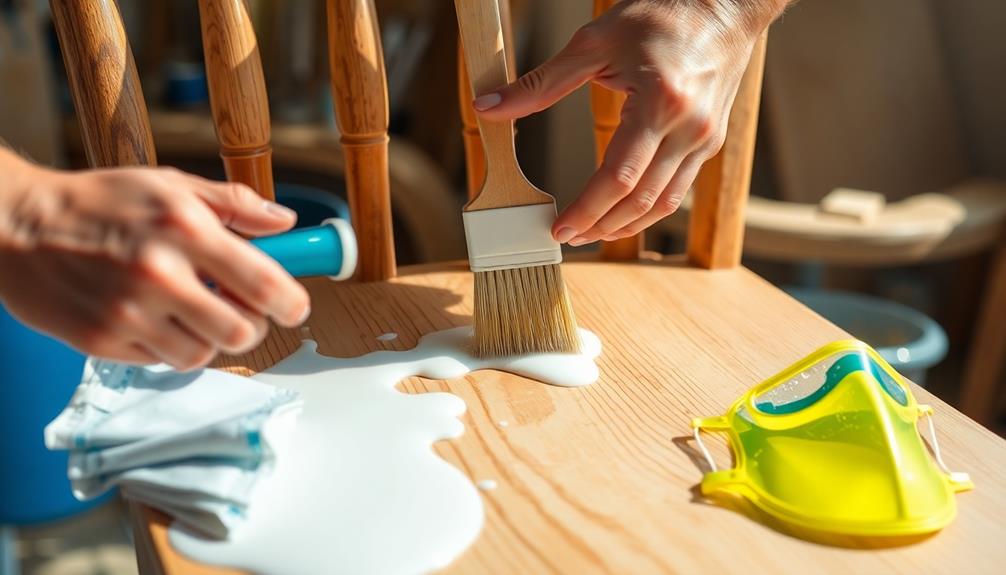
To achieve the best results when applying bleach to your furniture, start by working in sections to maintain control and prevent drips or pooling. For effective bleaching wood furniture, mix household bleach with hot water in a 1:1 ratio. Using a brush or sponge, apply bleach evenly to your chosen section. If possible, do this in a well-ventilated area to guarantee safety.
After applying the bleach, let it sit in sunlight for about 15 minutes before rinsing the wood thoroughly with water. This step neutralizes the bleach and prevents any adverse reactions. You may need to repeat the process multiple times to reach your desired wood color, especially with darker woods.
Here's a quick reference table to follow:
| Step | Action |
|---|---|
| Prepare Solution | Mix 1:1 household bleach and hot water |
| Apply Bleach | Use a brush/sponge, working in sections |
| Wait Time | Allow to sit for 15 minutes in sunlight |
| Rinse | Rinse thoroughly with water |
Post-Bleaching Care
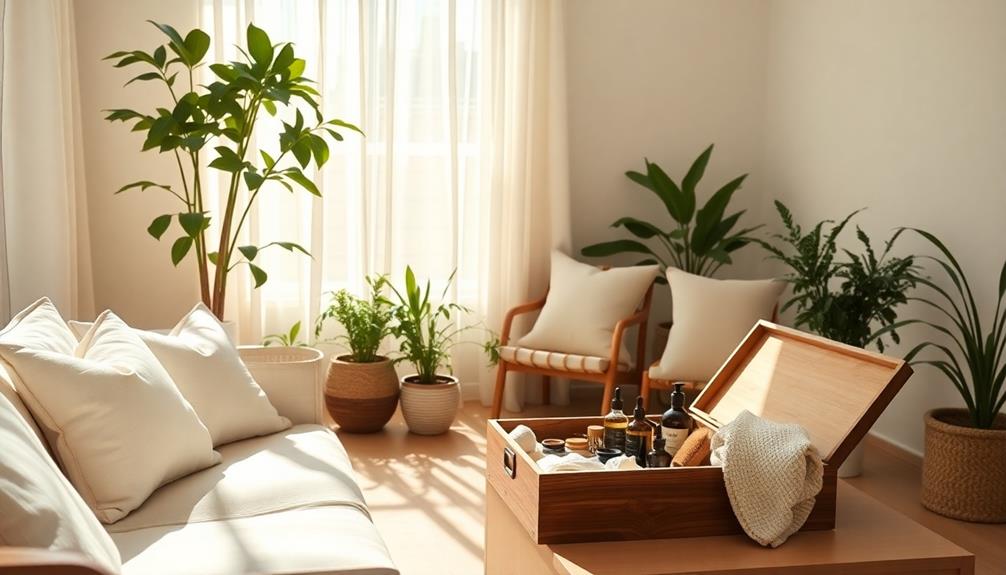
After you've bleached your furniture, rinsing the wood thoroughly with water is essential to neutralize any remaining bleach and protect the wood fibers from damage. This step is imperative for ensuring the wood remains healthy and maintains its durability.
Additionally, consider how maintaining your furniture's environment can affect its longevity, similar to how air quality considerations impact indoor air health.
Once you've rinsed, follow these steps for proper post-bleaching care:
- Lightly Sand: Use fine-grit sandpaper to smooth out any raised grain that may have developed during bleaching. This will help create a refined finish.
- Allow to Dry: Make sure to let the bleached wood dry completely in a well-ventilated area. This process might take several hours to a day, but it's essential for the next steps.
- Apply Sealer/Finish: To protect the bleached surface and enhance the wood grain, apply 2-3 coats of a non-yellowing sealer or finish. This will help maintain the wood's appearance and durability over time.
Don't forget about regular maintenance! Dusting and avoiding harsh chemicals will keep your bleached furniture looking great for years to come.
Safety and Cleanup Tips
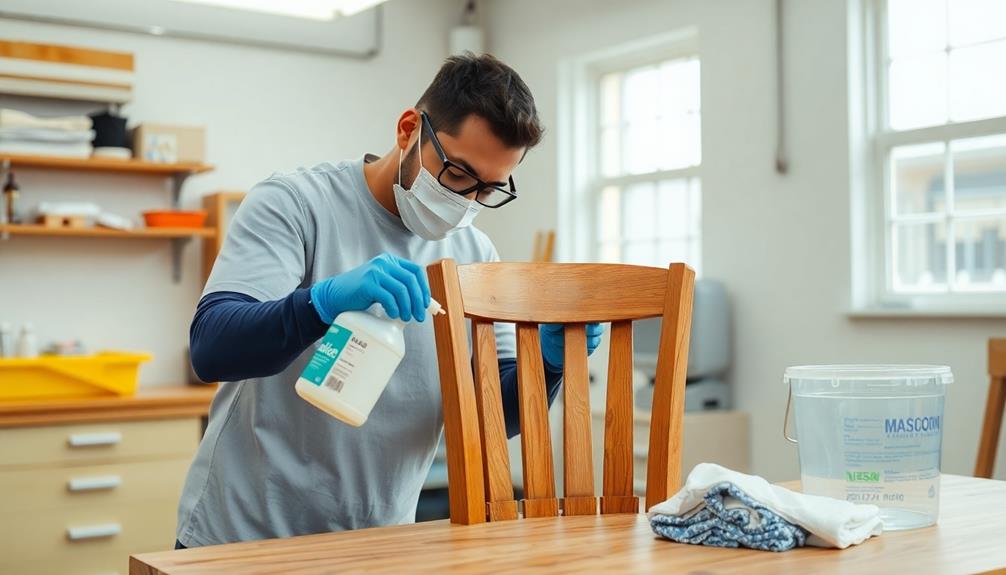
When you're working with bleach, safety should always be your top priority, as mishandling can lead to serious injuries.
Always follow safety instructions by wearing rubber gloves and safety glasses to protect your skin and eyes from caustic chemicals. Make sure your workspace is in a well-ventilated area; open windows or use fans to disperse fumes and maintain good air quality.
After bleaching, it's crucial to neutralize the wood. Prepare a neutralizing solution by mixing 50% vinegar and 50% water and rinse the bleached surface to prevent any residual bleach reactions.
For cleanup, dispose of leftover bleach and contaminated materials according to local regulations to avoid environmental harm.
Don't forget to clean any tools or surfaces that came into contact with bleach immediately after use. This prevents staining and damage to your materials while ensuring a safe workspace for future projects.
Frequently Asked Questions
How Do You Bleach Furniture at Home?
To bleach furniture at home, start by cleaning the wood thoroughly. Then, apply a bleach solution evenly, letting it sit briefly. Rinse well, dry completely, and consider multiple applications for the best results. Ensure proper ventilation while working with bleach to avoid inhaling any harmful fumes. After bleaching, you may need to lightly sand the wood for a smooth finish before applying any sealant or varnish. Additionally, if you need to remove mold from fabric furniture, consider using a specialized cleaning solution and ensure that the fabric is fully dried to prevent future mold growth.
Do You Have to Strip Furniture Before Bleaching?
Yes, you've got to strip furniture before bleaching. Stripping removes old paint and stain, allowing bleach to penetrate the wood properly. This process guarantees a more uniform color and ideal results for your project.
How Long to Leave Bleach on Furniture?
You should leave bleach on furniture for about 5 to 10 minutes for a subtle effect. If you want a more pronounced change, consider extending it to several hours, especially in sunlight. Always monitor closely.
Can You Bleach Wood With Regular Bleach?
Imagine transforming your wood like sunlight breaking through clouds. You can use regular bleach to lighten wood, but results depend on the type. Just remember, it's better suited for stain removal than dramatic color changes.
Conclusion
With your bleached furniture now gleaming like freshly fallen snow, you've breathed new life into your wooden treasures. Each piece tells a story, transformed by your hands into a canvas of light and beauty. As you step back and admire your work, remember to nurture your creations with care, ensuring they continue to shine bright. Just like a blooming flower, your furniture will thrive with a little love, reminding you of the artistry you've embraced in your home.
